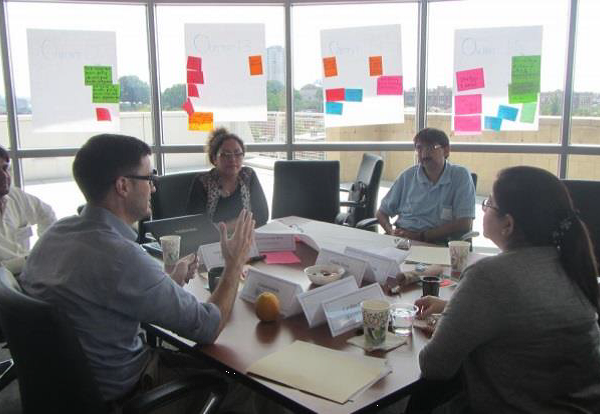In recent years donors have required organizations to demonstrate their commitment, approach, and capacity to address differences and inequalities between men, women, boys, and girls in their programs. This shift has motivated some organizations to take a closer look at their projects and workplace dynamics to assess their level of gender equality and then take action to improve their organization’s policies, practices, or programmatic approaches. An organization’s financial resources, political will, accountability mechanisms, and technical capacity all play into its ability to identify and address gender disparities.
At Cultural Practice, LLC (CP), we build on our staff members’ technical expertise and experience to help organizations develop or fine-tune their gender integration approach and build capacity so staff have the technical and managerial skills to respond to men’s and women’s needs in their projects and in the workplace. Whether your organization is taking its first step to address gender-related issues in programs or in the workplace or has a long established commitment to gender integration we can help you get where you want to go.
A hallmark of CP’s approach is developing an in-depth understanding of an organization’s capacity to integrate gender into their programs and then help them develop a pathway forward to achieve their goals. One tool we’ve used is a type of gender audit, building on a version developed InterAction and others. This self-assessment methodology solicits feedback from staff to identify areas of growth in an organization’s policies, procedures, practices, and programs. Organizations use the findings to inform gender equality policies, strategic plans, and approaches for integrating gender into programs. Organizations may choose to focus solely on internal policies before diving into broader programmatic issues or take a broader approach and review organizational and technical capacity simultaneously. We are leading gender audits with the Carter Center and Project Concern International, each with a unique scope and approach.
Organizations often start by taking a targeted approach by examining the extent to which projects are designed and implemented to address men’s and women’s differences and constraints. We have used this approach working with Pathfinder International, the McKnight Foundation, and the Center for International Forestry Research (CIFOR). In these cases, an initial program assessment phase led to activities to strengthen the design of programs and staff’s awareness and ability to implement and monitor projects. We recently worked with the humanitarian organization International Medical Corps to assess how gender-related issues were incorporated into proposals.
We build organizational capacity to address gender-related issues by increasing individual’s awareness and competencies in gender concepts and gender analysis through training and curriculum development. For example, with International Maize and Wheat Improvement Center (CIMMYT) we are developing a gender competency framework, training modules, and learning accountability framework tailored to CIMMYT’s needs.
These approaches are most effective when they are used systematically through a long-term process. Since 2012, we have been serving as Lutheran World Relief’s external gender advisor on its Learning for Gender Integration (LGI) initiative. The initiative began as a result of a gender audit conducted in 2011 that initiated internal discussion by staff about the organization’s programming. We conducted an initial assessment of LWR’s agricultural portfolio to identify strengths and weaknesses of gender integration practices, which led to the development of pilot projects in India, Uganda, and Nicaragua to test gender-responsive design and implementation tools. We continue to collaborate in the development of appropriate gender-responsive monitoring tools and provide proposal development support. Together, we also produced the Gender Integration Storybook documenting a range of different organization’s gender integration experiences.
No matter how far along your organization is in this process we can help enhance your capacity to design and manage gender-integrated programs and to strengthen equitable outcomes. Learn more.

